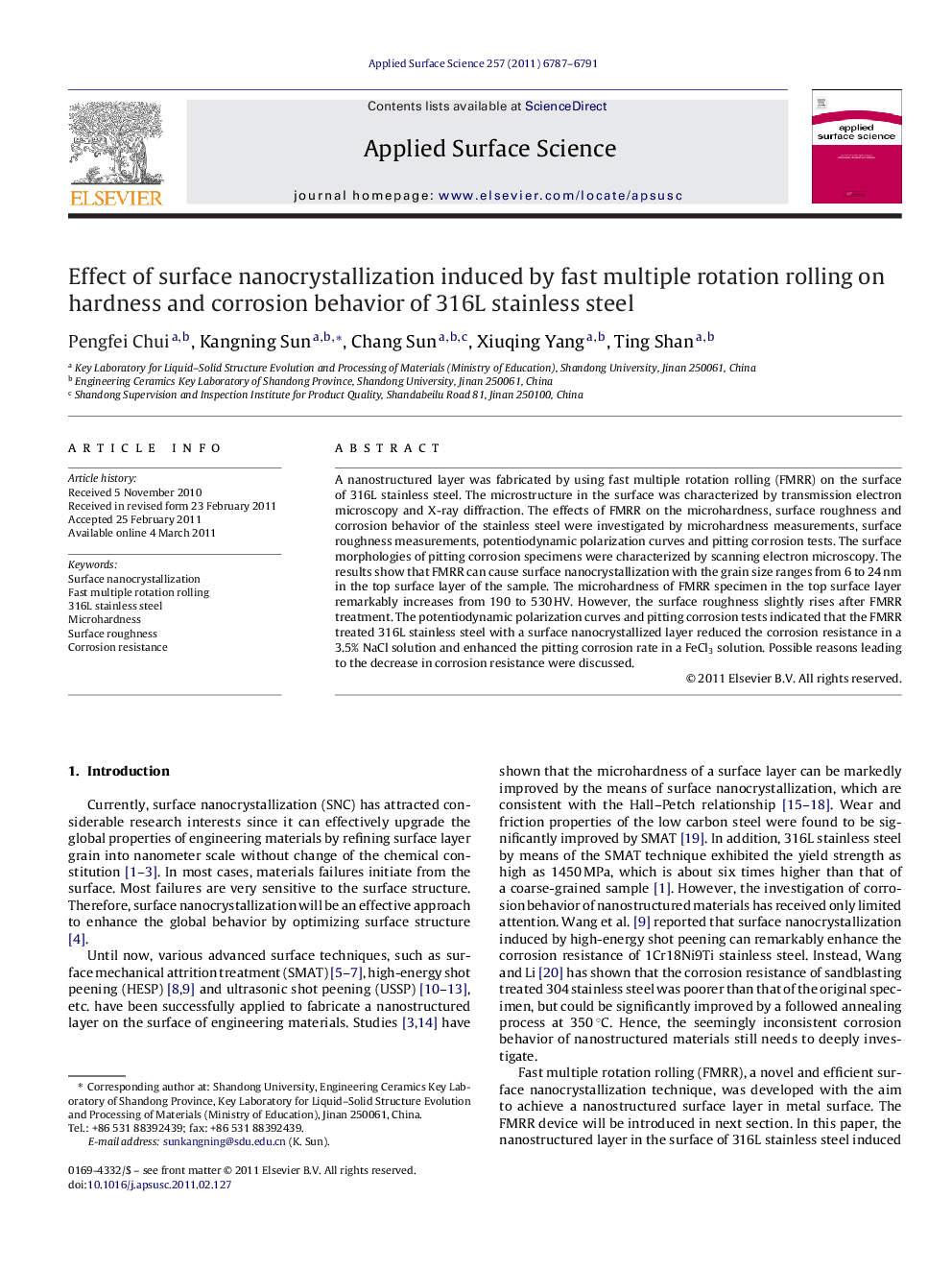| Article ID | Journal | Published Year | Pages | File Type |
|---|---|---|---|---|
| 5361855 | Applied Surface Science | 2011 | 5 Pages |
A nanostructured layer was fabricated by using fast multiple rotation rolling (FMRR) on the surface of 316L stainless steel. The microstructure in the surface was characterized by transmission electron microscopy and X-ray diffraction. The effects of FMRR on the microhardness, surface roughness and corrosion behavior of the stainless steel were investigated by microhardness measurements, surface roughness measurements, potentiodynamic polarization curves and pitting corrosion tests. The surface morphologies of pitting corrosion specimens were characterized by scanning electron microscopy. The results show that FMRR can cause surface nanocrystallization with the grain size ranges from 6 to 24Â nm in the top surface layer of the sample. The microhardness of FMRR specimen in the top surface layer remarkably increases from 190 to 530Â HV. However, the surface roughness slightly rises after FMRR treatment. The potentiodynamic polarization curves and pitting corrosion tests indicated that the FMRR treated 316L stainless steel with a surface nanocrystallized layer reduced the corrosion resistance in a 3.5% NaCl solution and enhanced the pitting corrosion rate in a FeCl3 solution. Possible reasons leading to the decrease in corrosion resistance were discussed.
⺠Effect of Surface nanocrystallization on 316L stainless steel. ⺠A novel and efficient surface nanocrystallization technique was developed. ⺠Microhardness remarkably increases from 190 to 530 HV. ⺠Corrosion resistance deteriorated after treatment. ⺠Possible reasons leading to the decrease in corrosion resistance were discussed.
